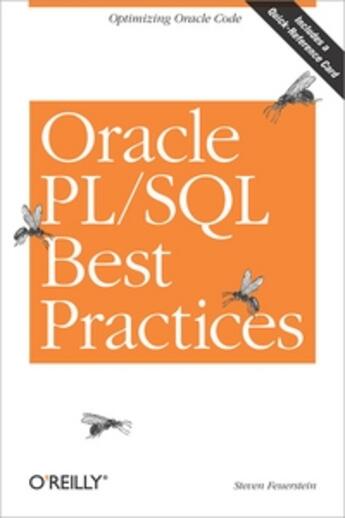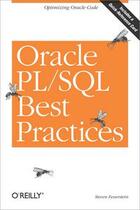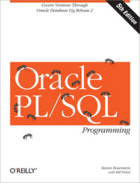-
Date de parution : 27/04/2001
-
Editeur :
O Reilly & Ass
-
EAN : 9780596001216
-
Série :
(-)
-
Support :
Papier
Résumé:
In this book, Steven Feuerstein, widely recognized as one of the world's experts on the Oracle PL/SQL language, distills his many years of programming, writing, and teaching about PL/SQL into a set of PL/SQL language "best practices"--rules for writing code that is readable, maintainable, and... Voir plus
In this book, Steven Feuerstein, widely recognized as one of the world's experts on the Oracle PL/SQL language, distills his many years of programming, writing, and teaching about PL/SQL into a set of PL/SQL language "best practices"--rules for writing code that is readable, maintainable, and efficient. Too often, developers focus on simply writing programs that run without errors--and ignore the impact of poorly written code upon both system performance and their ability (and their colleagues' ability) to maintain that code over time.
Oracle PL/SQL Best Practices is a concise, easy-to-use reference to Feuerstein's recommendations for excellent PL/SQL coding. It answers the kinds of questions PL/SQL developers most frequently ask about their code:
How should I format my code?
What naming conventions, if any, should I use?
How can I write my packages so they can be more easily maintained?
What is the most efficient way to query information from the database?
How can I get all the developers on my team to handle errors the same way?
The book contains 120 best practices, divided by topic area. It's full of advice on the program development process, coding style, writing SQL in PL/SQL, data structures, control structures, exception handling, program and package construction, and built-in packages. It also contains a handy, pull-out quick reference card. As a helpful supplement to the text, code examples demonstrating each of the best practices are available on the O'Reilly web site.
Oracle PL/SQL Best Practices is intended as a companion to O'Reilly's larger Oracle PL/SQL books. It's a compact, readable reference that you'll turn to again and again--a book that no serious developer can afford to be without.
Donner votre avis
















